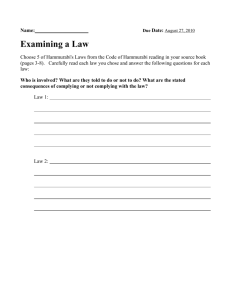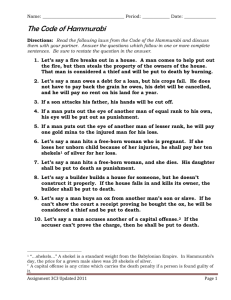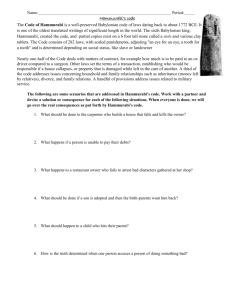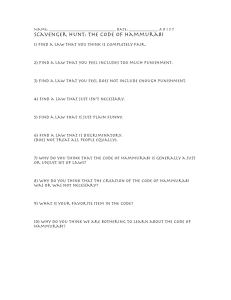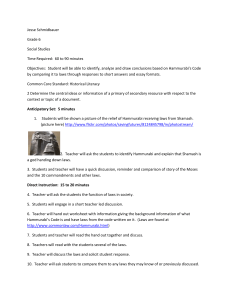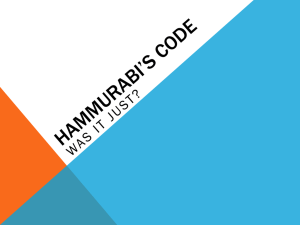Station A The Code of Hammurabi had 282 laws. It was written on a
advertisement
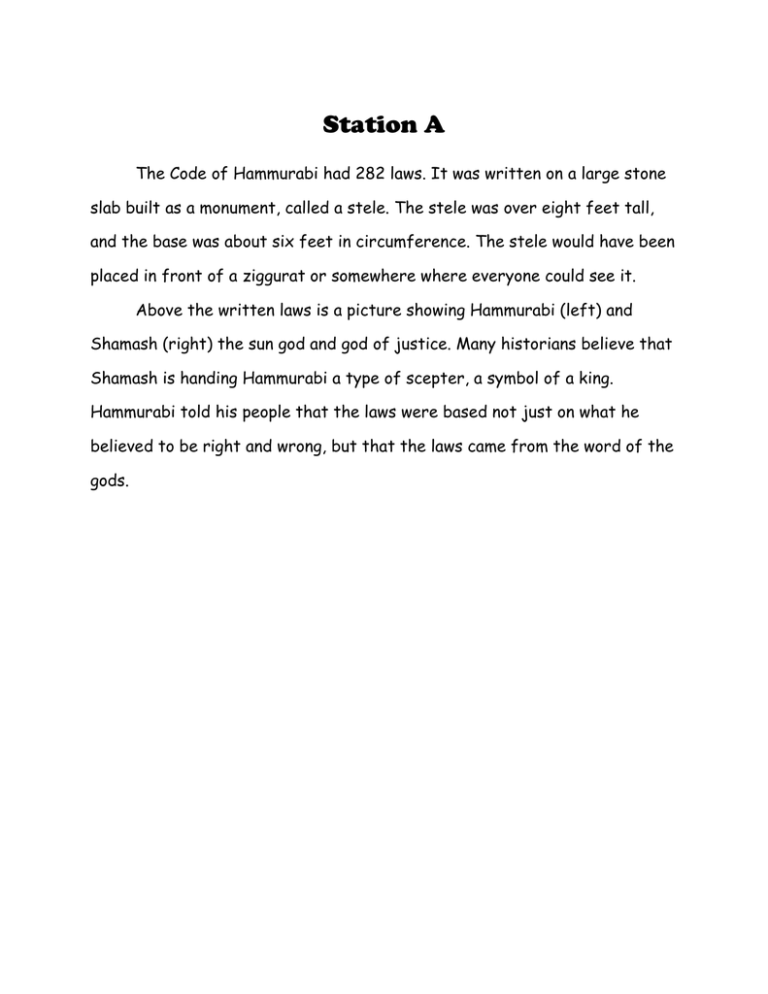
Station A The Code of Hammurabi had 282 laws. It was written on a large stone slab built as a monument, called a stele. The stele was over eight feet tall, and the base was about six feet in circumference. The stele would have been placed in front of a ziggurat or somewhere where everyone could see it. Above the written laws is a picture showing Hammurabi (left) and Shamash (right) the sun god and god of justice. Many historians believe that Shamash is handing Hammurabi a type of scepter, a symbol of a king. Hammurabi told his people that the laws were based not just on what he believed to be right and wrong, but that the laws came from the word of the gods. Station B Around the same time that Hammurabi was developing these laws, similar cities and empires were growing in different parts of the world. In India, the city of Harappa had its own government, culture, religion, history, art and architecture, rules and regulations. Similar cities were growing in China and Egypt as well. Station C On the stele, after the last set of laws, is written: “…Hammurabi, the protecting king that I am… That the strong might not injure the weak, I set up these my precious words, written upon my memorial stone, before the image of me, as a king of justice.” “In future time, let whoever the king may be… not change the law of the land which I have given the people… if this ruler does not enforce these rules... if he destroys the laws which I have given… may the great gods of heaven and earth cause a curse upon his family, his land, his warriors, his people, and his troops.” Station D The code of Hammurabi addresses people according to three main social classes: the higher class, middle class, and lower class. It also dealt with how slaves were treated. Many of the laws show how these different classes were treated. 209. If a man hits a free-born woman and hurts her, he needs to pay her ten shekels (form of money), however if the woman is a maid-servant (lower class than a free-born) he only needs to pay her two shekels.” 251. If a man has an ox that he knows is an ox that will hurt people, and the owner does not tie him up safety, and that ox gets out and kills a free-born man, the owner will pay half a mina (amount) of silver. 252. If the ox kill a man's slave, he shall pay only one-third of a mina of silver. Station E One of the laws says: If anyone accuses someone of a serious crime and brings them before the court of elders (people in charge), and does not prove that the person is guilty of the crime, he shall be put to death. Station F One of the laws says: 218. If a doctor makes a large incision with the operating knife, kills the patient, the doctors’ hands shall be cut off.
